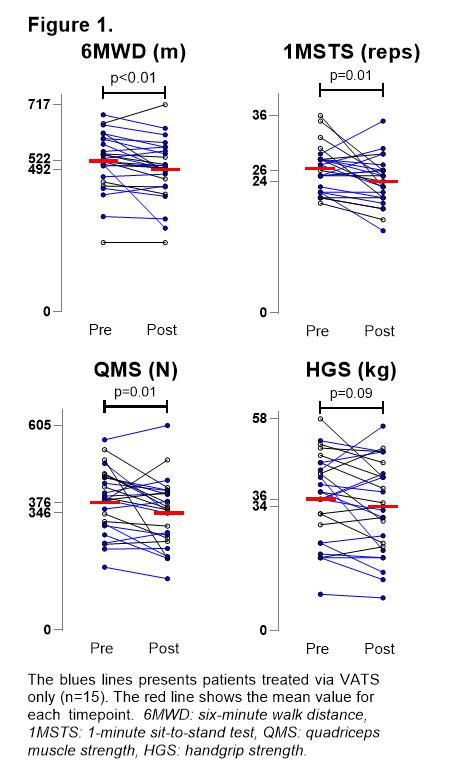Abstract
Introduction
In patients with early-stage non-small cell lung cancer (NSCLC), the treatment consists of surgery, (neo)adjuvant chemotherapy or radiotherapy. This treatment potentially compromises physical functioning due to direct impact on physical capacity and associated physical inactivity.
Aims
This multicenter observational study aimed to investigate the impact of the medical treatment on physical performance in patients with early-stage NSCLC. We hypothesized a decrease in functional status as compared to pre-treatment values.
Methods
Patients with early-stage NSCLC (stage I-IIIA) were assessed before and three months after treatment initiation. Outcomes were six-minute walk distance (6MWD), repetitions on the one minute sit-to-stand test (1MSTST), quadriceps muscle strength (QMS; microFET), and handgrip strength (HGS; Jamar). Paired t-tests or Wilcoxon Signed rank tests were used for analysis.
Results
27 patients were included (19 males; age 65±9yrs; 8 with COPD). Patients had NSCLC stage IA (n=14), IB (n=5), IIB (n=3) or IIIA (n=5) and were treated via VATS only (n=15), VATS and adjuvant chemotherapy (n=7), or radiotherapy only (n=5). Three months after treatment, a significant worsening was found for 6MWD, 1MSTST, and QMS. HGS did not change over time (Figure 1).
Conclusion
The treatment of early-stage NSCLC results in a worsening of functional exercise tolerance and QMS as compared to pre-treatment values.
